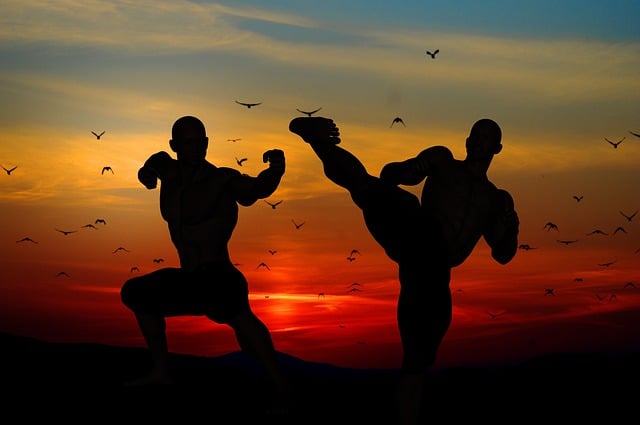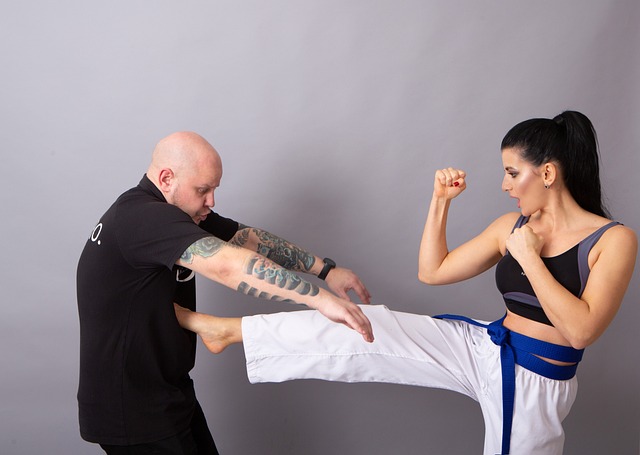Exploring the traditions and techniques of karate, one encounters the iconic white garb synonymous with martial artists: the karate uniform, or Gi. This article delves into the significance of a Karate Gi within martial arts uniforms, tracing its historical evolution and exploring the key characteristics that make it indispensable for optimal performance in training. From its origins to modern design adaptations, understand how this simple attire is deeply rooted in the discipline’s ethos and practice. Join us as we unravel the intricacies of a garment that stands as a symbol of respect, unity, and tradition in the world of martial arts uniforms.
- Understanding the Essentials of Martial Arts Uniforms: The Significance of a Karate Gi
- Historical Evolution and Modern Design: How the Karate Uniform Evolved Over Time
- Key Characteristics and Material Considerations for Optimal Performance in Karate Training
Understanding the Essentials of Martial Arts Uniforms: The Significance of a Karate Gi

Martial arts uniforms, often referred to as ‘keikogi’ in Japanese, serve as more than mere garments for practitioners; they are integral components of martial arts training and culture. A karate gi, specifically, is a two-piece cotton outfit consisting of trousers and a jacket. The design of a karate gi facilitates ease of movement and provides durability to withstand the rigors of practice. It is constructed with a heavier fabric than many other martial arts uniforms, offering a tactile learning experience for the practitioner as they sense their own movements and those of their opponents. The simplicity and functionality of the karate gi underscore its significance in maintaining the discipline and tradition inherent to martial arts training.
The choice of material and design in a karate gi is carefully considered to ensure that it does not hinder or restrict movement, allowing for full range of motion required for effective execution of techniques. The weight and weave of the fabric also vary according to the style and belt rank of the practitioner, with heavier fabrics often used for advanced students to build strength and endurance. Additionally, the traditional white color of the karate gi symbolizes purity and humility, setting a mindful tone for training and reinforcing the martial arts’ values of respect, discipline, and integrity. Understanding the essentials of martial arts uniforms, particularly the significance of a karate gi, is crucial for anyone delving into the art of karate or related disciplines. It is not just about adhering to a tradition but also about embracing the principles that these uniforms represent within the practice and philosophy of martial arts.
Historical Evolution and Modern Design: How the Karate Uniform Evolved Over Time

The evolution of karate uniforms, akin to martial arts uniforms at large, reflects both functional and cultural changes over time. Initially, practitioners wore unstructured garments such as cotton kimonos that allowed for ease of movement and did not hinder the range of motion required for various techniques. These early attire facilitated learning and practice by minimizing distractions from tight-fitting or restrictive clothing. Over time, the need for a more standardized and practical uniform led to the development of the traditional gis worn in karate today, which are also common across various martial arts. The gi, consisting of a jacket and pants, is made of heavier fabric than the original kimonos, often cotton or hemp blends, offering durability while still maintaining flexibility for performance.
As martial arts uniforms evolved, so did the specific design elements of karate gis. The modern gi now comes in a standardized white color, symbolizing honor and humility, and is designed to be both durable and lightweight. It typically features a belt, or obi, that holds the jacket closed and signifies rank. The jacket, known as the Uwagi, and the pants, called the Shin-gi, are constructed with specific cuts and hems to ensure optimal movement while performing various karate kata and techniques. The design of these martial arts uniforms has been refined over decades, influenced by the needs of practitioners and the spreading popularity of the sport, to achieve a balance between traditional aesthetics and modern practicality. Today’s karate gi is a testament to this ongoing evolution, offering both functionality for the athlete and a nod to the rich history from which it originates.
Key Characteristics and Material Considerations for Optimal Performance in Karate Training

